We share the most interesting facts about Antarctica collected on our recent trip to the seventh continent
For a long time, it seemed like our trip to Antarctica wasn’t going to happen. Covid postponed it from 2020 to 2021, and then again to 2022. Even after we got the green light, our nerves didn’t ease. If we tested positive for Covid, we wouldn’t be allowed to board the ship, and daily testing meant that we could be quarantined in our cabins even after setting sail. In short, it was more stressful than expected.
Despite the extra anxiety, we were thoroughly enchanted by the great white continent. In fact, Antarctica quickly became our number one travel experience – a testament to its majesty given the daily challenges.
During our 10-day voyage, we watched a sleeping baby humpback whale; met Gentoo and Chinstrap penguins; saw extraordinary icebergs and landscapes; and fell in love with Paradise Bay. Along the way, we learnt myriad interesting facts about Antarctica, the best of which we share below.
Interesting facts about Antarctica
1. Antarctica is home to a ghost mountain range
Antarctica is home to one of the world’s biggest mountain ranges: the Gamburtsev Mountains which stretch more than 1,200 kilometres across the interior of the continent. The tallest peaks are around 2,800m (9,000ft), but here’s the thing: they are completely buried beneath the thick Antarctic ice. As such, the Gamburtsev Mountains are known as Antarctica’s ‘Ghost Mountains’.
(Source: British Antarctic Survey)
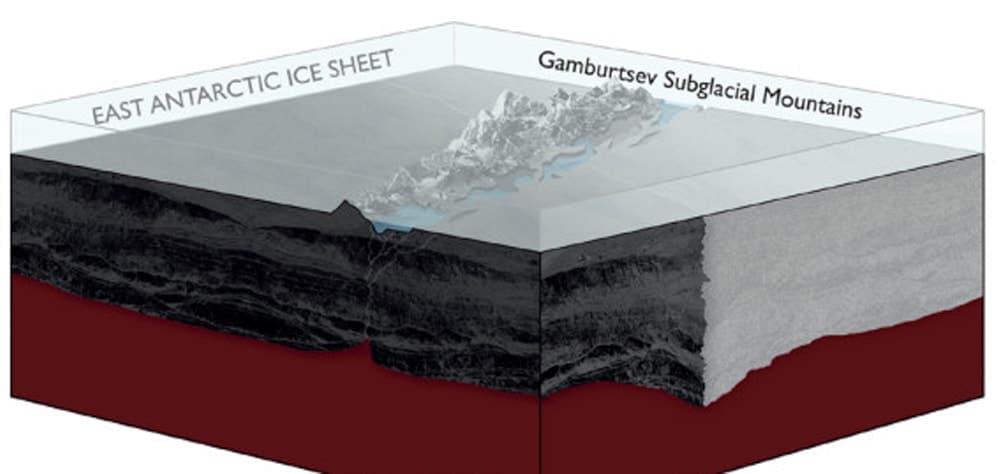
2. Antarctic ice is three miles thick
The ice in Antarctica is three miles thick in places. The Astrolabe Subglacial Basin has the thickest ice in the world: a jaw-dropping 4,776m (15,669ft). For context, that’s half the height of Mount Everest.
(Source: BBC)
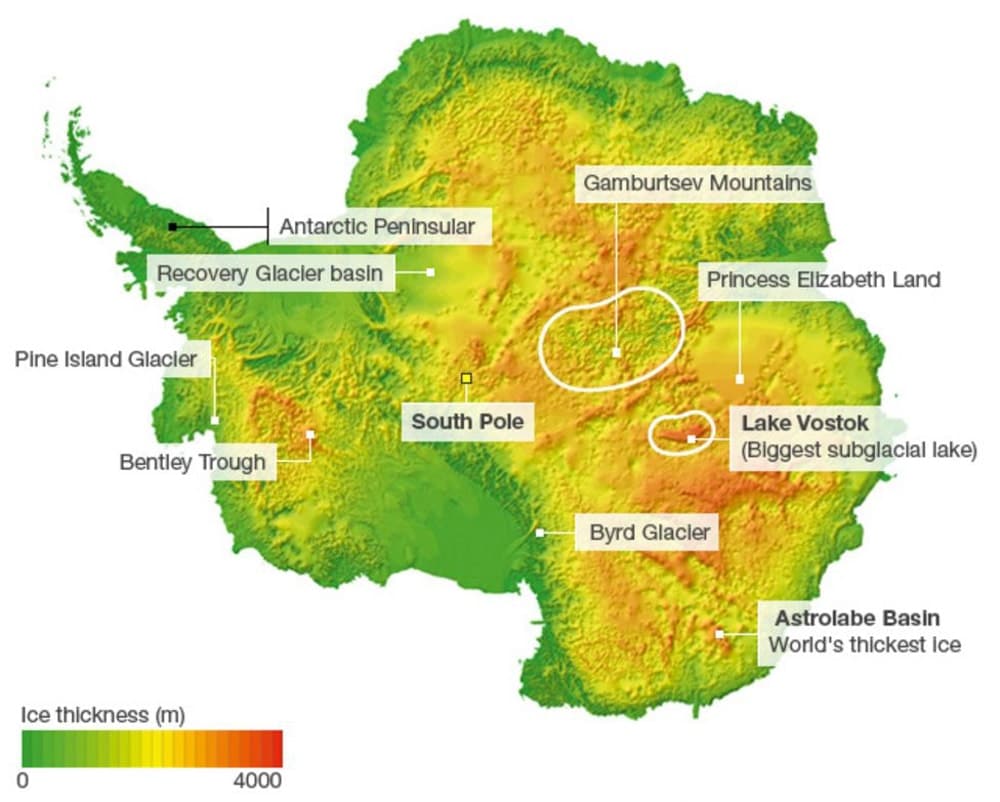
3. Earth’s deepest point on land is in Antarctica
It’s relatively well-known that the Mariana Trench in the Pacific Ocean is the deepest point on the surface of Earth. Meanwhile, the lowest exposed land is at the shore of the Dead Sea, 413m (1,355ft) below sea level. The overall deepest point on land, however, is in East Antarctica under the Denman Glacier. The canyon there is covered by ice and reaches 3,500m (11,500ft) below sea level. Only in the ocean are valleys deeper.
(Source: BBC)
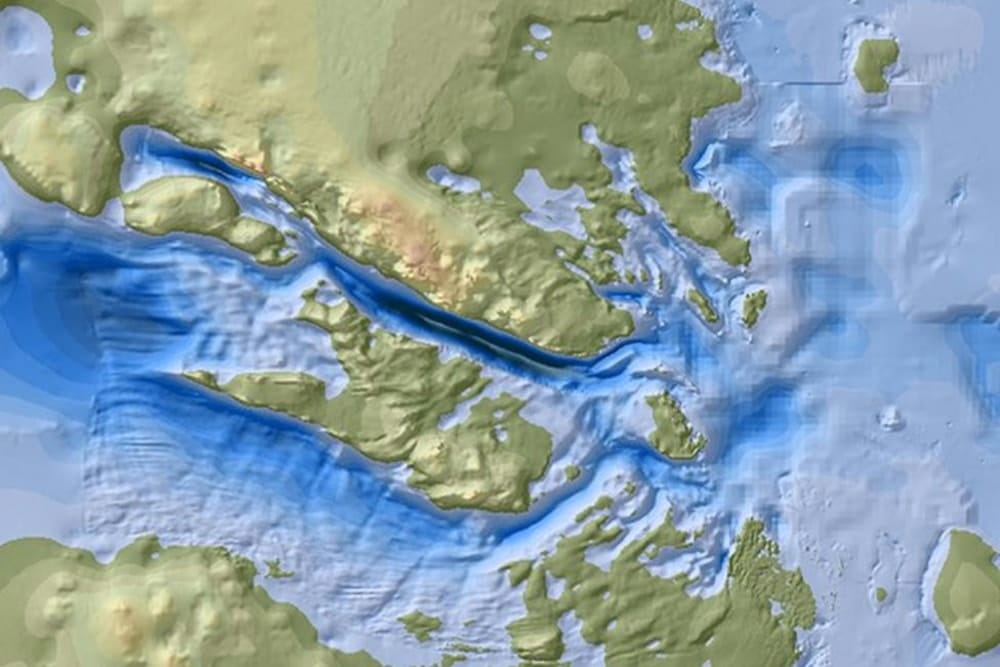
4. The coldest temperature ever recorded was in Antarctica
The coldest temperature ever recorded on Earth was at Vostok Station, a Russian research station in Antarctica. There, temperatures dropped to a heart-stopping -89.2°C (-128.6°F). Satellite data suggest that temperatures have dropped even lower, to -93.2°C (-135.8°F) on 10th August 2010, but this was never confirmed on the ground.
(Source: British Antarctic Survey, BBC)
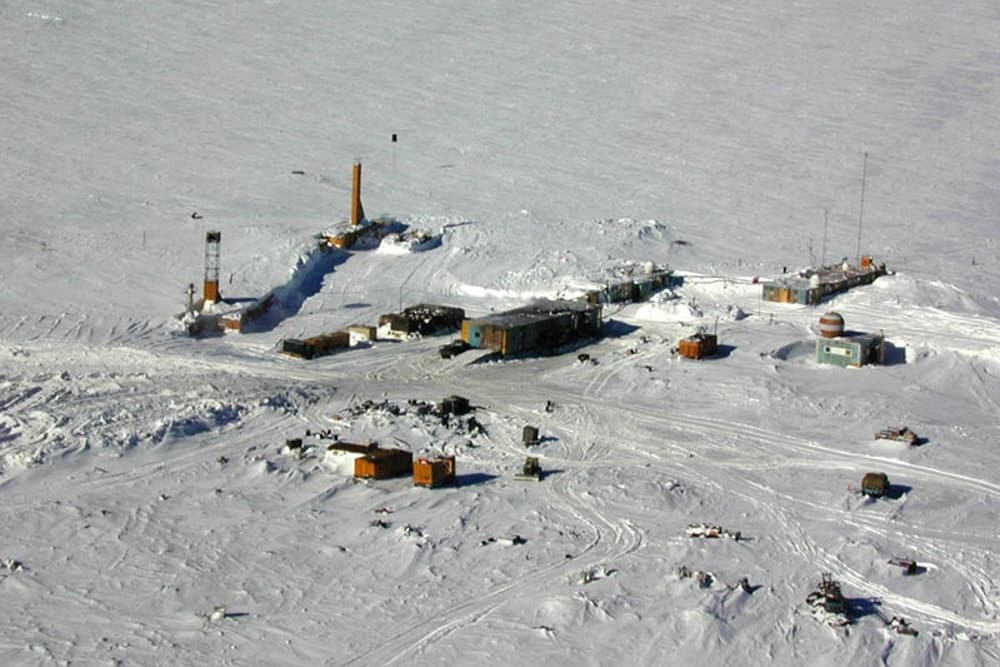
5. Antarctica expands to twice its size in winter
In the winter, Antarctic sea advances from the continent by around 100,000 square kilometres (40,000 square miles) per day, ultimately doubling the size of Antarctica before melting again in the summer.
(Source: BBC, BBC)
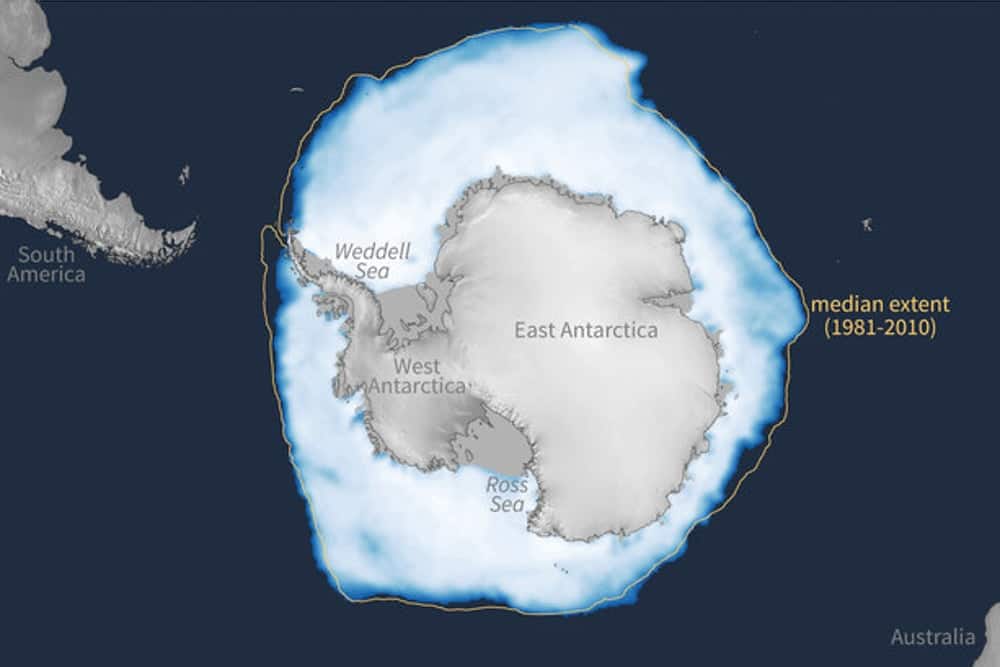
6. The South Pole has one sunrise and one sunset a year
The South Pole has only one sunrise (at the September equinox) and one sunset (at the March equinox) every year. Due to Earth’s tilted axis, the sun is always above the horizon in the summer and always below it in the winter.
(Source: National Geographic)
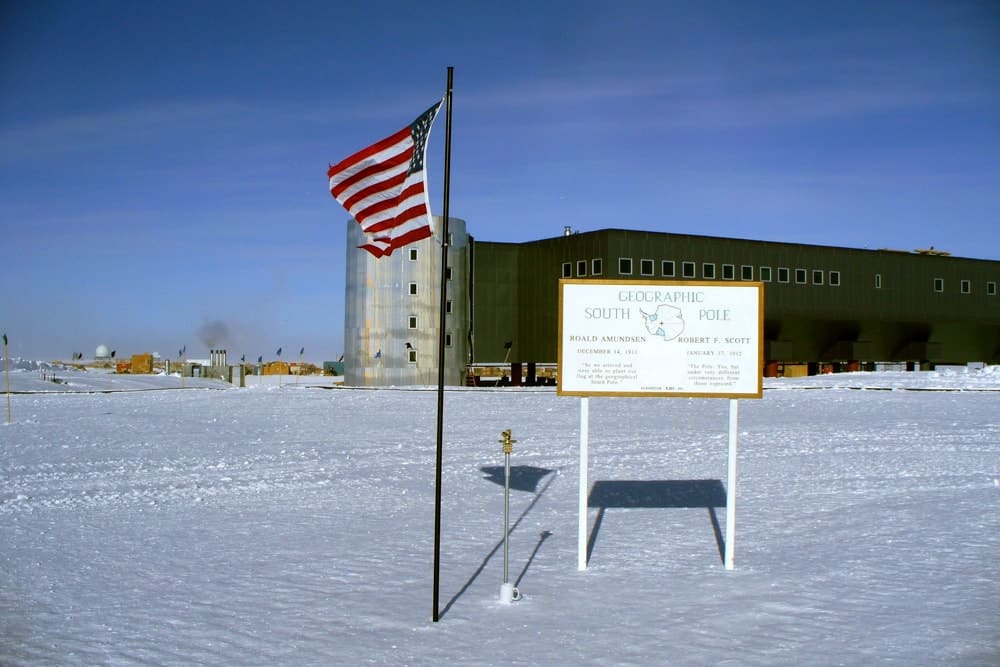
7. There is no Antarctic time zone
Antarctica does not have its own time zone. Most of the continent experiences six months of constant daylight in the summer and six months of darkness in winter, so time seems more fluid. Scientists and researchers tend to stay on the time zone of the country to which their station belongs. Interestingly, at the South Pole, the lines of longitude which mark out the world’s time zones meet at a single point, which means that the Pole is technically in every time zone.
(Source: BBC)
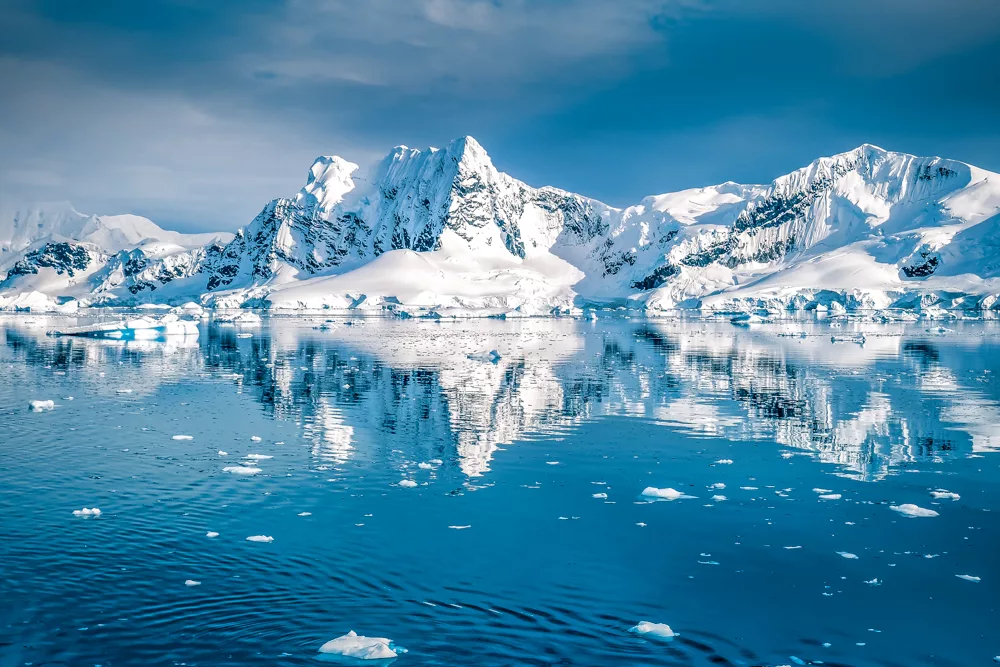
8. At the South Pole, every direction is north
The South Pole is the southernmost point on Earth so no matter which direction you face, you will be facing north. ‘West Antarctica’ and ‘East Antarctica’ are mapped according to the prime meridian, an imaginary line which passes through Greenwich in the UK at 0 degrees longitude. If you face Greenwich from the South Pole, everything to your left will be West Antarctica and everything to your right, East Antarctica.
(Source: National Geographic)
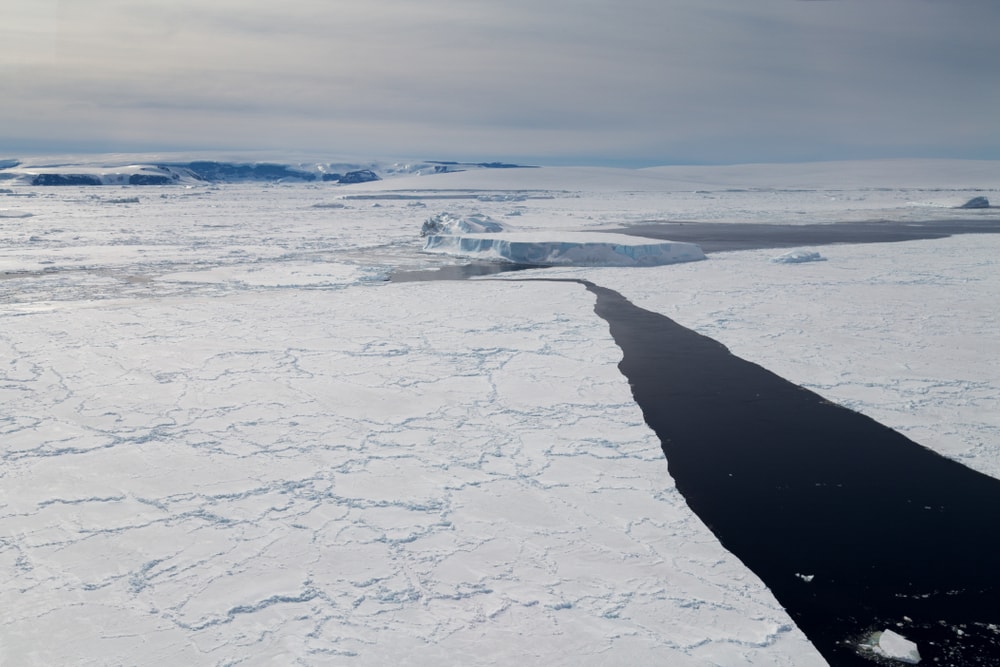
9. Antarctica is a desert
A desert is defined as a region which receives very little annual precipitation so while Antarctica is certainly not hot and sandy, it is classified as a desert given its low precipitation. In fact, Antarctica is the driest continent on Earth (as well as the coldest, windiest and highest on average).
(Source: BBC)
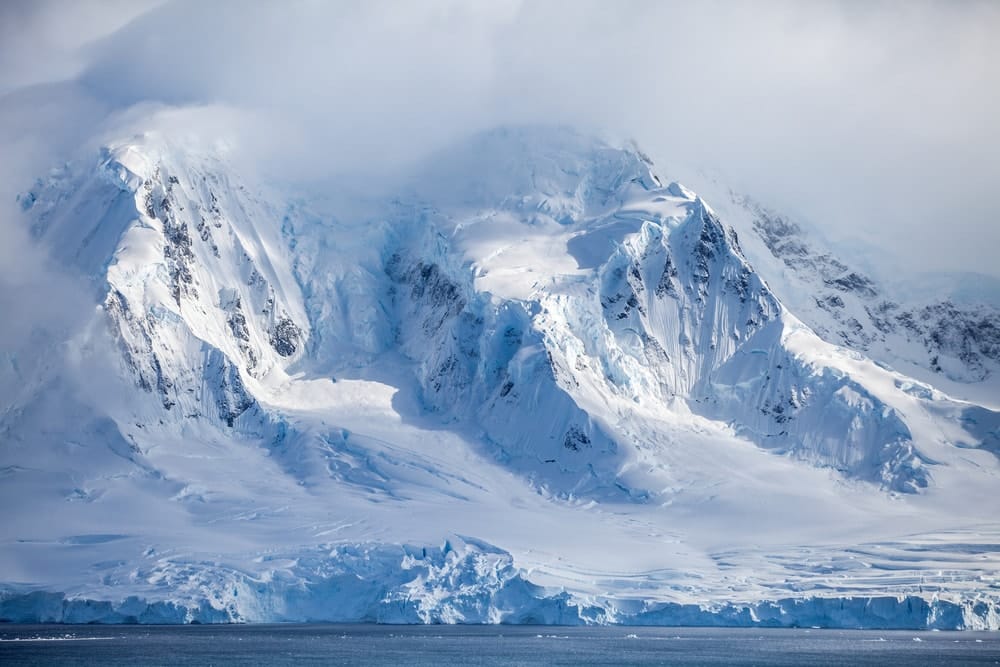
10. Antarctica has a ‘bloody’ waterfall
In a remote corner of Antarctica lies a glacier that ‘bleeds’. The deep red water of Blood Falls was first observed in 1911 but it wasn’t until 2017 that scientists discovered the cause. The water flowing from Taylor Glacier comes from a subglacial lake high in salt and oxidised iron, which gives the falls a bloody hue.
(Source: National Geographic)
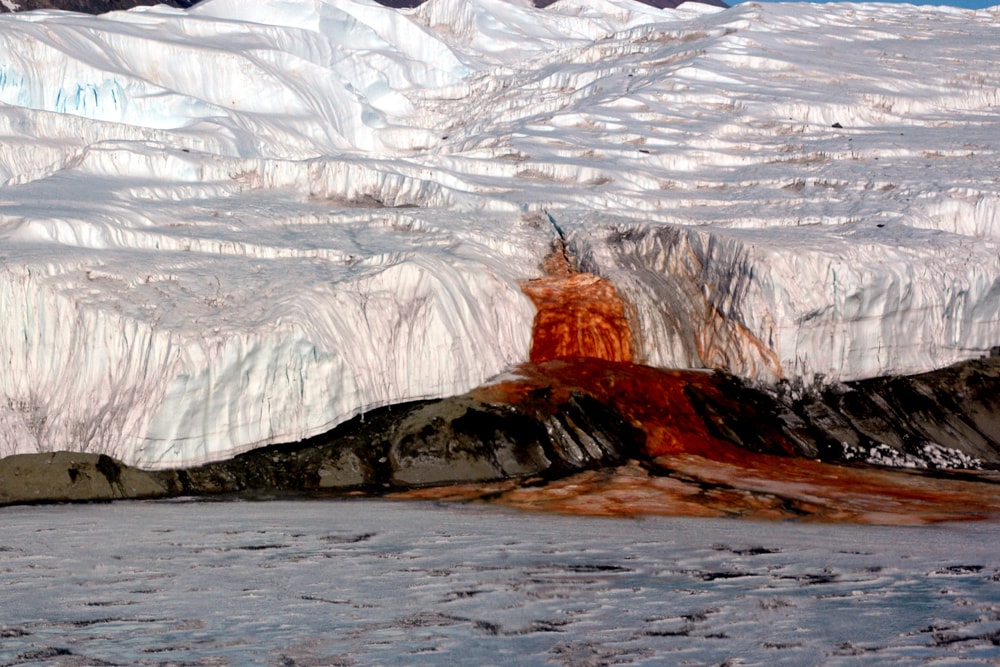
11. Some Antarctic species have ‘anti-freeze’ in their blood
One of the most interesting facts about Antarctica is that some of its fish species have special ‘anti-freeze’ proteins in their blood to stop them from freezing solid. Freshwater freezes at 0ºC (32ºF) but salt water can drop to -1.8ºC (28.75ºF) before freezing. Luckily, this evolutionary quirk allows the fish to survive in sub-zero temperatures.
(Source: New York Times)
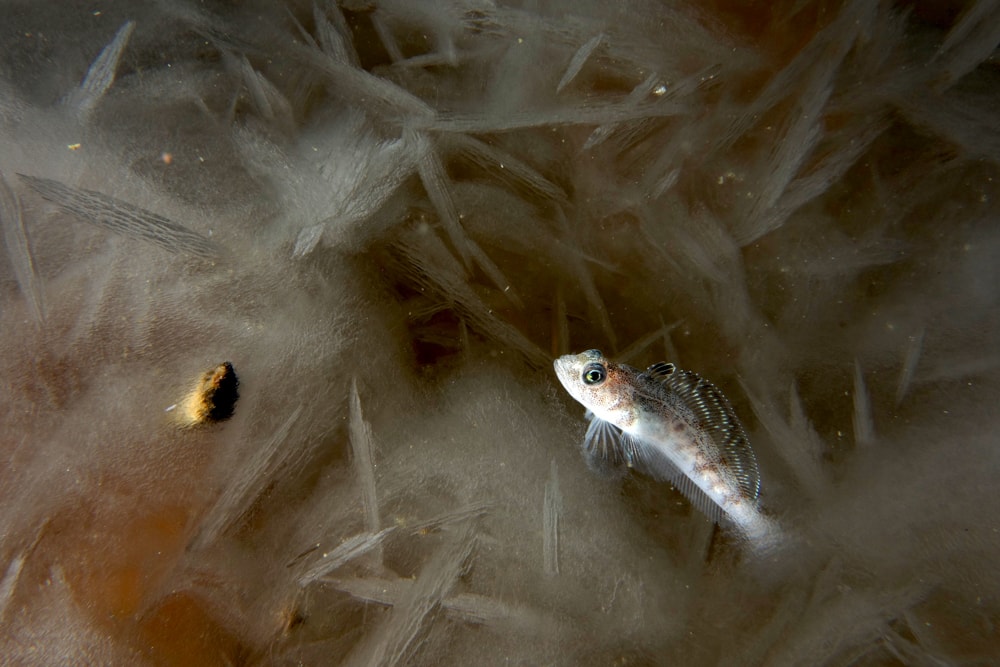
12. Eleven people have been born in Antarctica
In January 1978, Emilio Marcos Palma became the first person to be born in Antarctica. His pregnant mother was reportedly sent there by Argentine authorities in an effort to claim a portion of the continent. Since then, 10 other babies have been born on the continent.
(Source: Guinness World Records)

13. It’s possible to run a marathon in Antarctica
Hardy athletes can sign up to the 26.2-mile Antarctic Ice Marathon, currently in its sixteenth year. The event takes place at 80 degrees south, just a few hundred miles from the South Pole, at the foot of the Ellsworth Mountains. If you’re keen – and have a spare $20,500 USD – you can sign up at icemarathon.com.
(Source: Antarctic Ice Marathon)
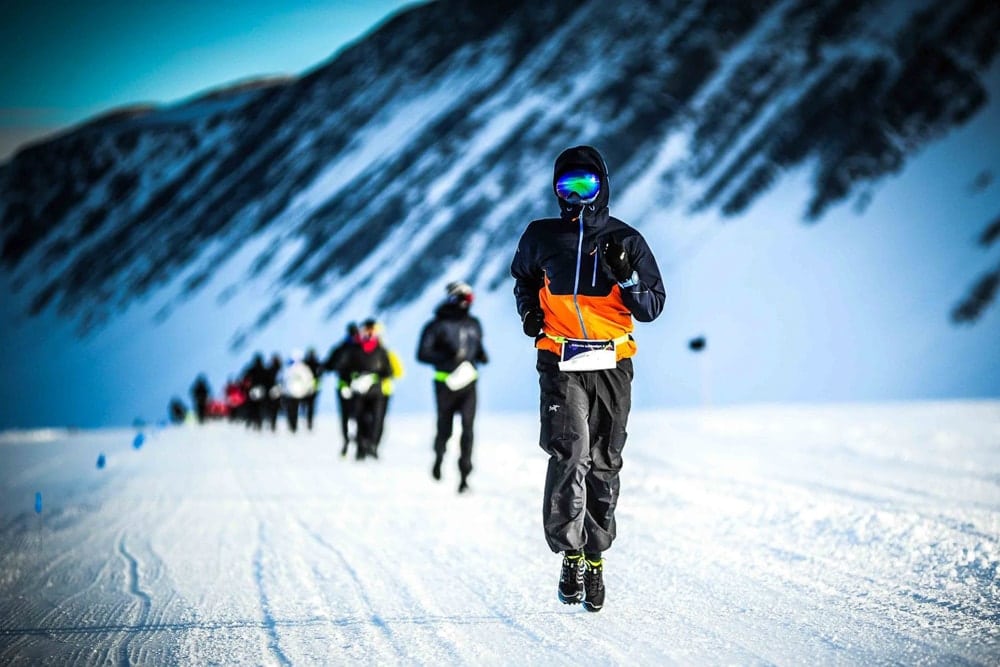
14. Antarctica has a lake that doesn’t freeze at -20ºC
Deep Lake in Antarctica is so salty that it can’t freeze even in temperatures as low as -20°C (-4°F).
(Source: Nature)
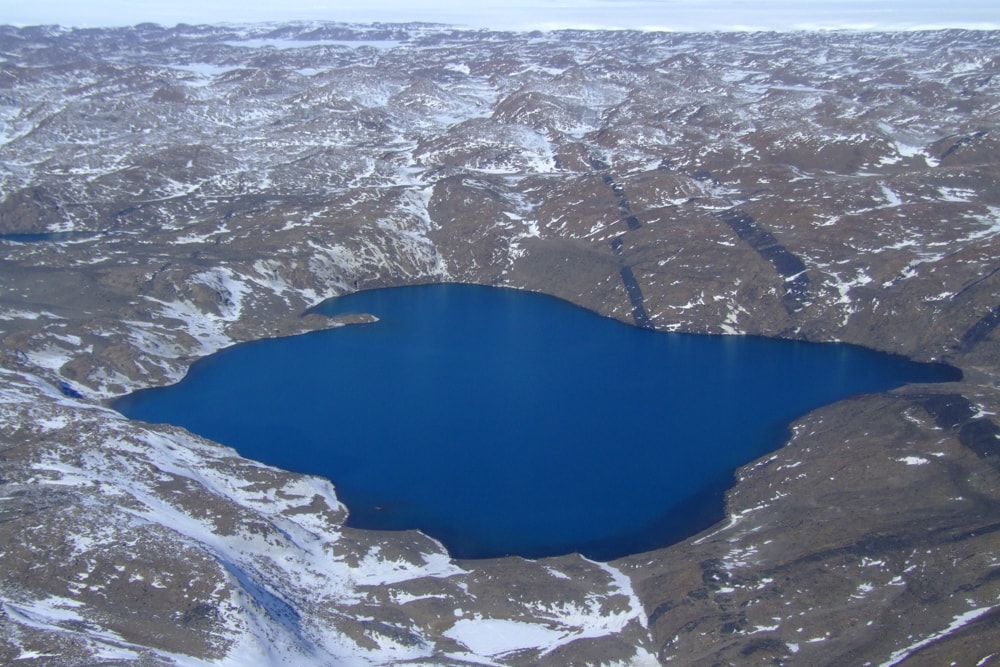
15. The land in Antarctica is depressed by the weight of its ice
Antarctica’s ice sheet is so heavy that it has caused the land underneath to sink in places. Eastern Antarctica is about 2,500m (8,200ft) below sea level because of the colossal weight of the ice.
(Source: National Geographic)
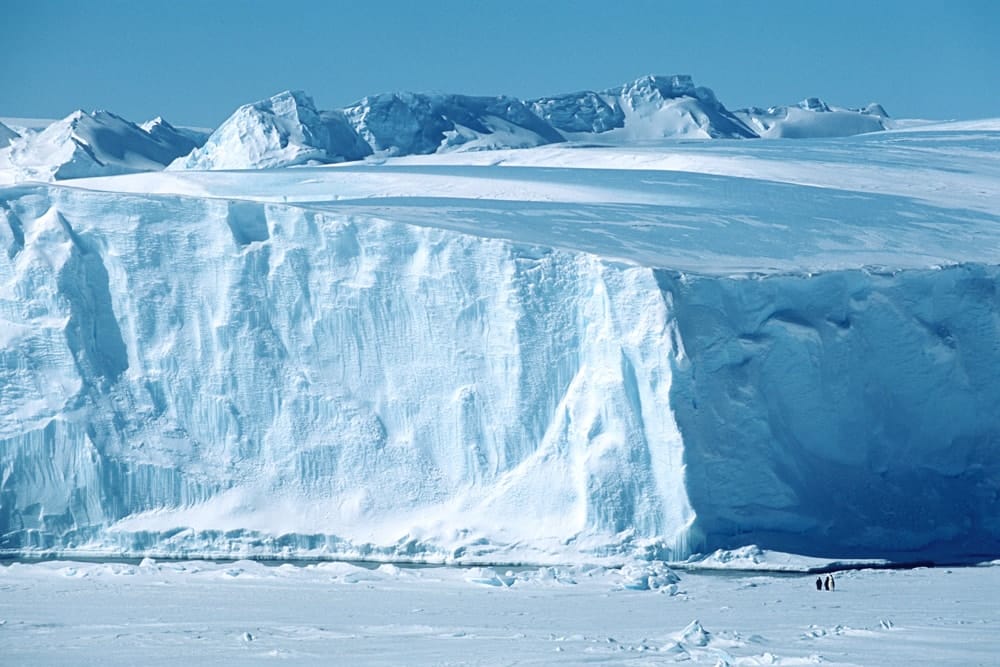
16. The Antarctic Circle changes position
The Antarctic Circle is a line of latitude 66°33′49.0″ south of the Equator. Below this line, the sun remains continuously above the horizon for 24 hours at least once a year. For tourists, the line marks an official crossing into Antarctica (though it is possible to land on continental Antarctica without crossing the circle). Interestingly, the position of the line is not fixed and is currently drifting southwards at a speed of about 14.5m (48ft) per year.
(Source: Britannica, World Ocean Review)
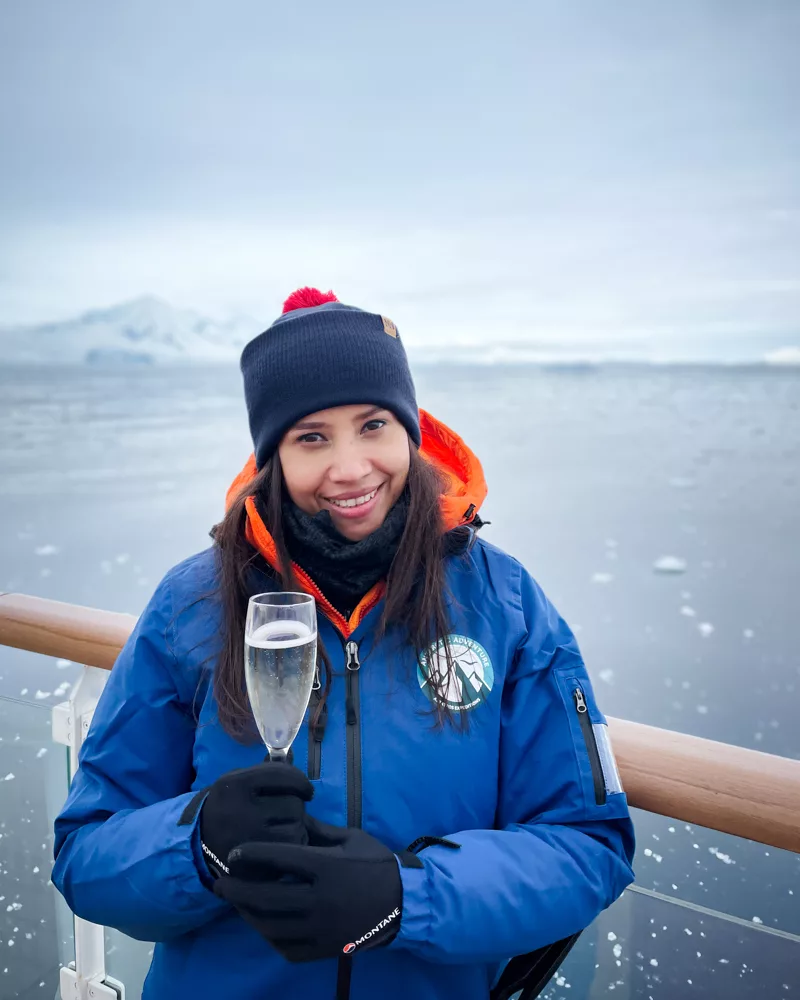
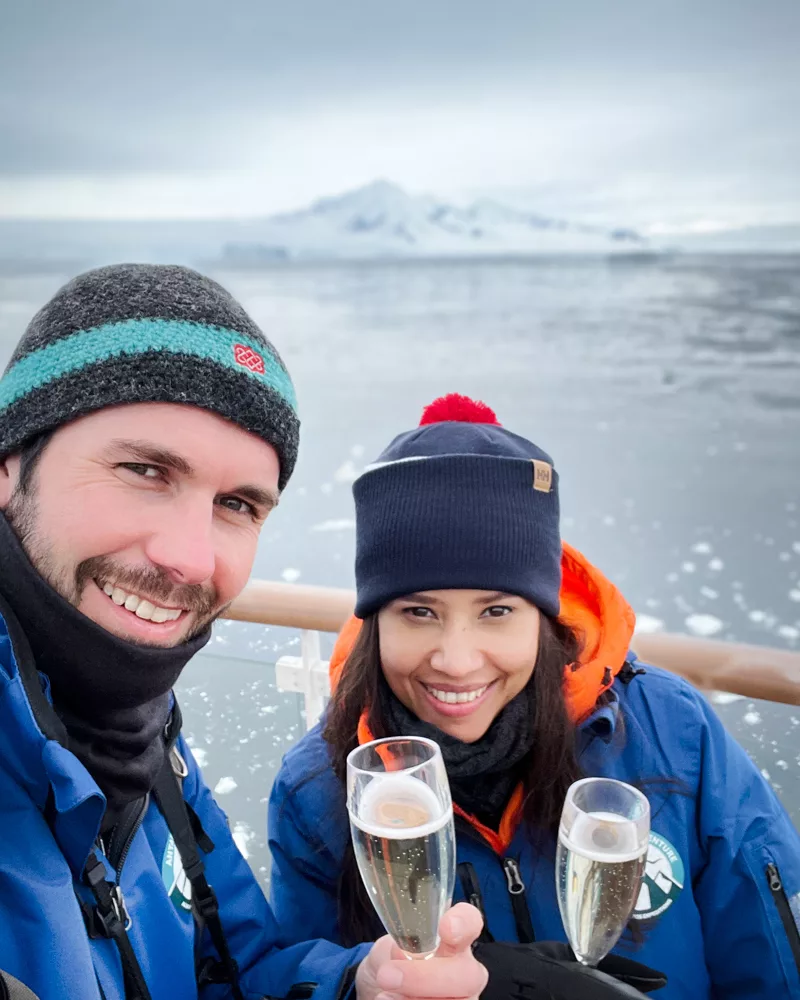
Atlas & Boots
Kia and Peter raise a toast to crossing the Antarctic Circle
17. Long-term residents have to have their appendix removed
One of the most interesting facts about Antarctica pertains to Villas Las Estrellas, a settlement on King George Island and one of the few places in the continent where people can live for years rather than months. To settle there, residents must have their appendix removed to minimise the risk of medical emergencies. And they’re not the only ones. Doctors wintering at Australian Antarctic stations must undergo the procedure as well.
(Source: BBC, BBC, Australian Antarctic Program)
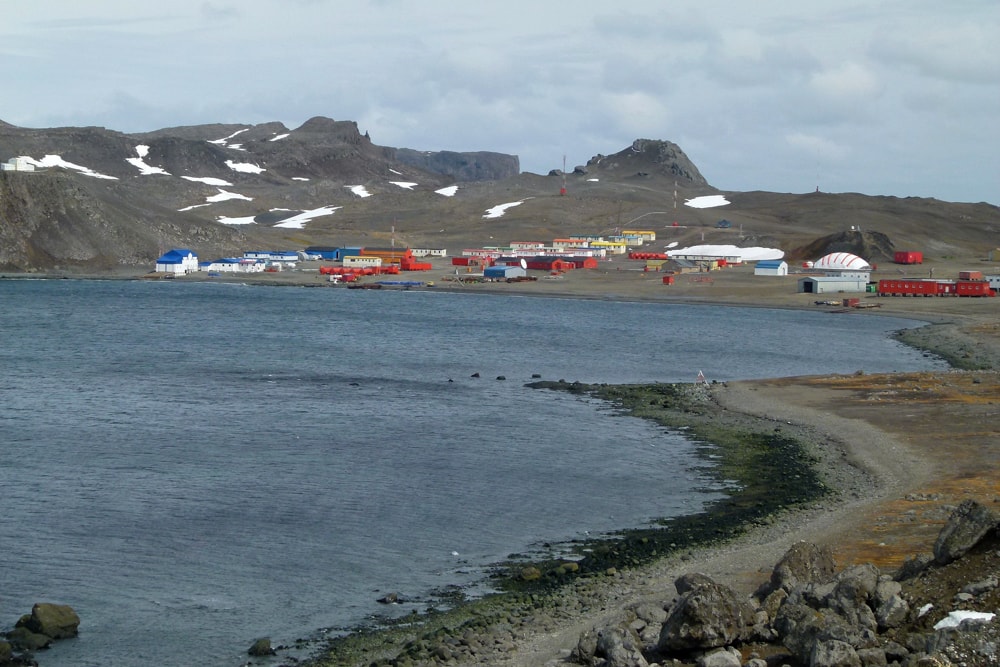
18. The Drake Passage is one of the most treacherous stretches of water
Most visitors to Antarctica must cross the Drake Passage, a notorious body of water between Chile’s Cape Horn and the South Shetland Islands where three oceans meet and waves can exceed 12m (40ft), unhindered by landmasses. The Drake is considered one of the most treacherous voyages for ships.
(Source: Britannica, NPR)
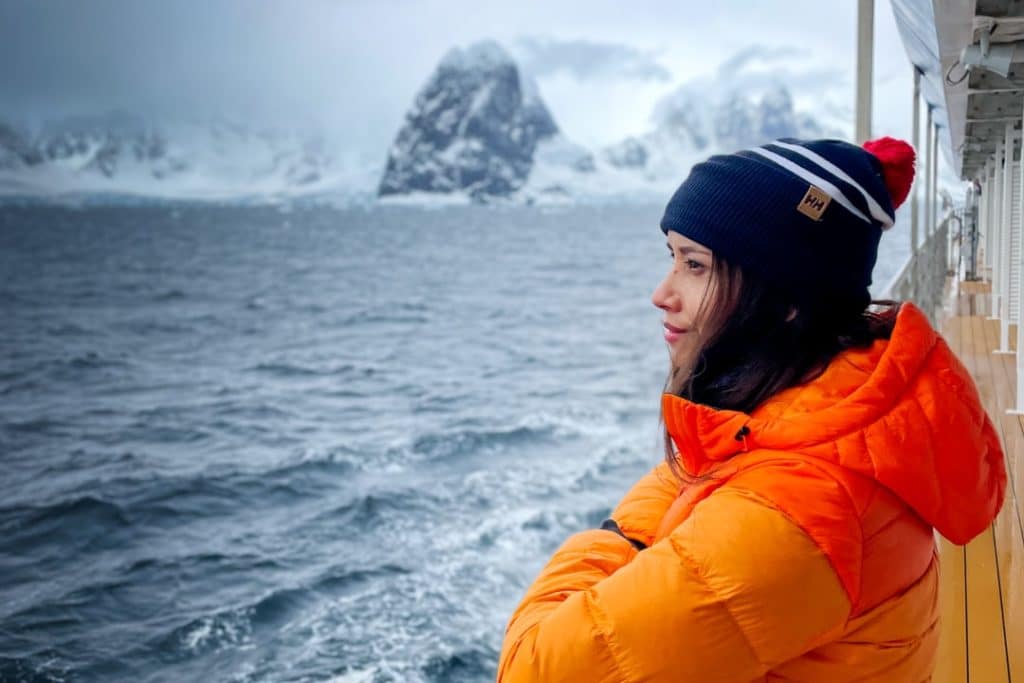
19. Antarctica is home to active volcanoes
Antarctica’s Mount Erebus is one of the most active volcanoes in the world. Located on Ross Island, it has a summit elevation of 3,794m (12,448ft) and is home to one of the world’s few persistent lava lakes. Erebus is remarkable because its low-level but persistent activity allows volcanologists to study the Strombolian eruptive system very close to the active vents (i.e. hundreds of metres).
(Source: NASA)
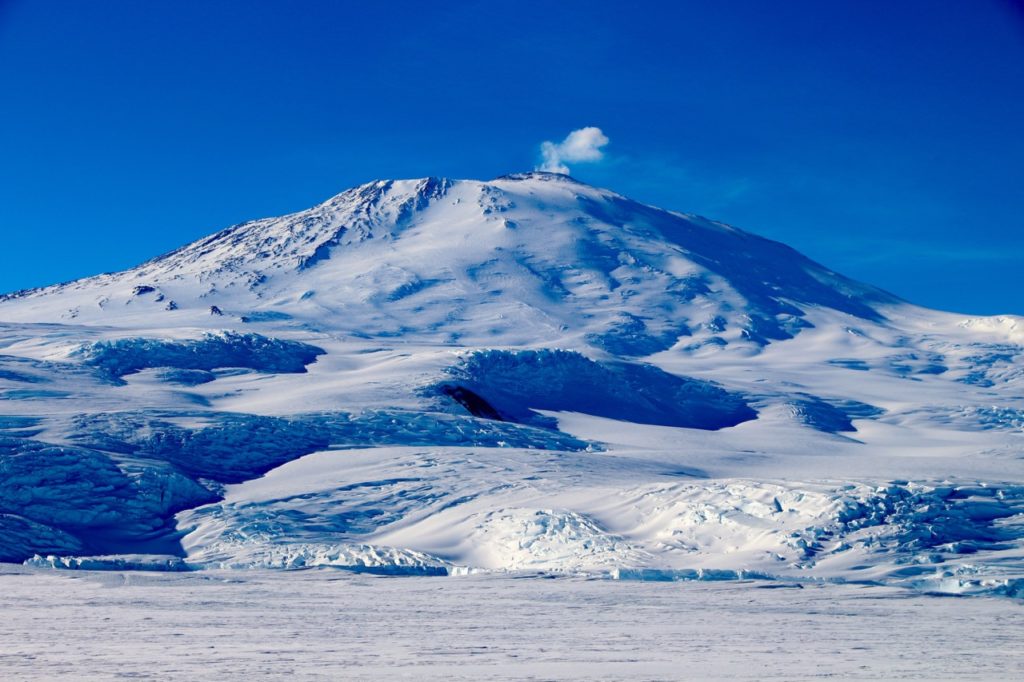
20. Antarctica is protected by the Antarctic Treaty
The Antarctic Treaty which came into force on 23rd June 1961 has ensured that Antarctica remains a peaceful place where the environment is protected and scientific research takes priority. Military activity on land or on ice shelves below 60 degrees south is prohibited and the countries active in Antarctica consult on the uses of the whole continent, with a commitment that it should not become the scene or object of international discord.
(Source: British Antarctic Survey)
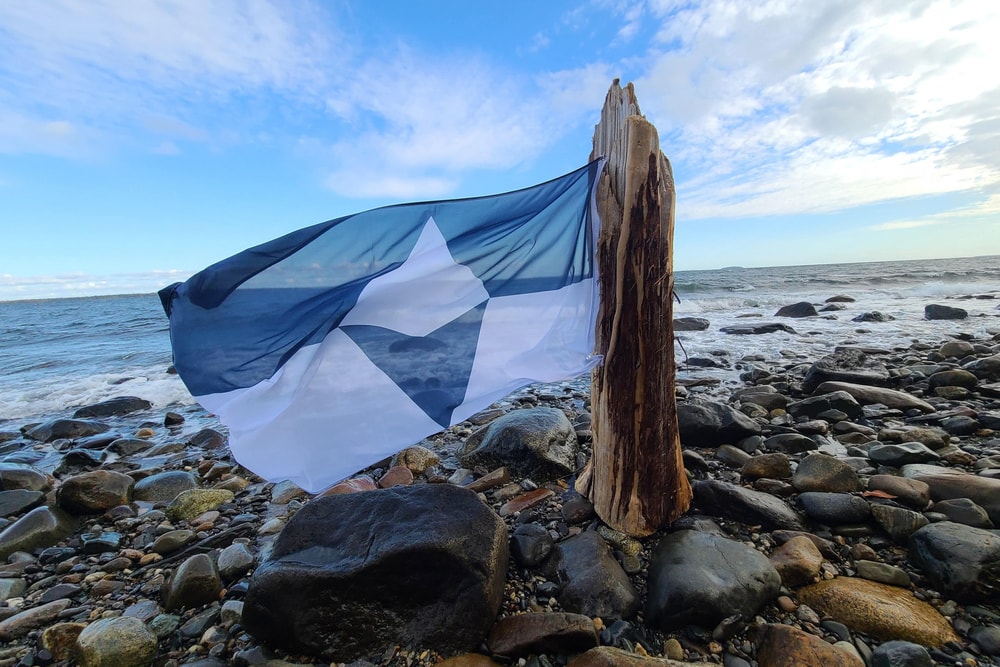
Enjoyed this post? pin it for later…
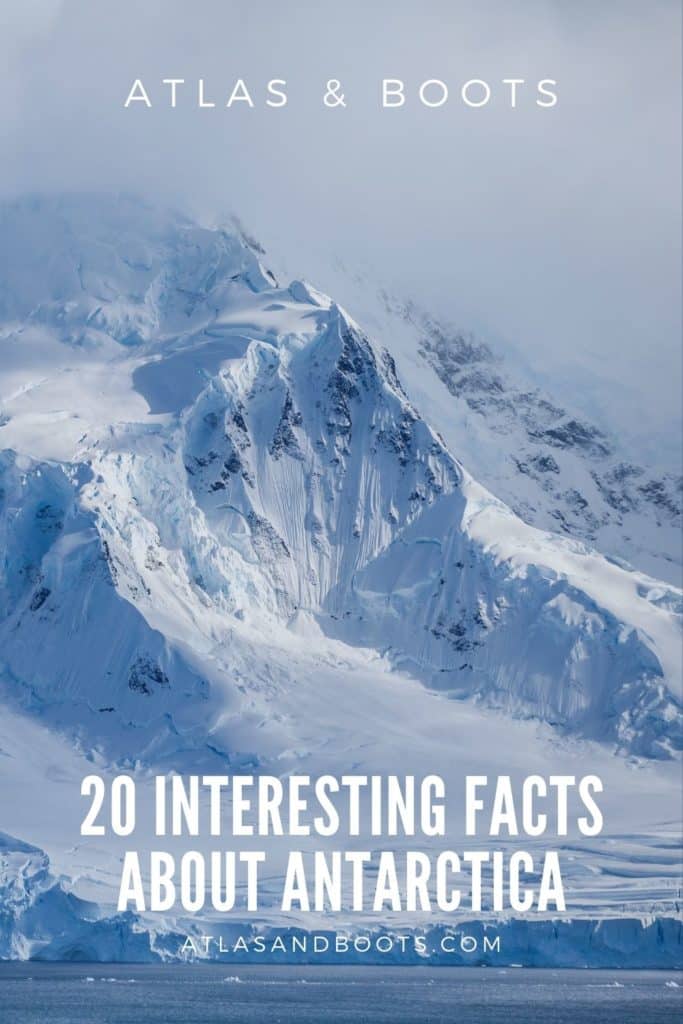
Lead image: Reform-Furl581/Shutterstock
[flexi-common-toolbar] [flexi-form class=”flexi_form_style” title=”Submit to Flexi” name=”my_form” ajax=”true”][flexi-form-tag type=”post_title” class=”fl-input” title=”Title” value=”” required=”true”][flexi-form-tag type=”category” title=”Select category”][flexi-form-tag type=”tag” title=”Insert tag”][flexi-form-tag type=”article” class=”fl-textarea” title=”Description” ][flexi-form-tag type=”file” title=”Select file” required=”true”][flexi-form-tag type=”submit” name=”submit” value=”Submit Now”] [/flexi-form]






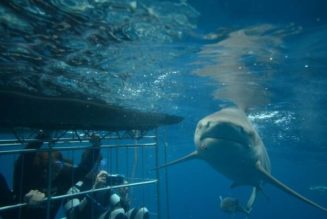



Tagged: Antarctica, travel blog